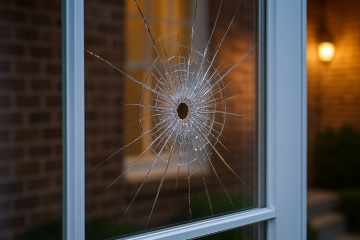 Most of us like to think of home as our castle—the place where we’ve got the pantry stocked, the generator gassed, and maybe even a secret stash of chocolate bars hidden under the rice buckets. (Don’t look at me like that, Steve—we all know your “emergency stash” is really just Tuesday night chocolate.) But here’s the thing: sometimes, your castle turns into a liability. Fires, chemical spills, civil unrest, or the mother-in-law moving in for “just a week” that somehow becomes six months—whatever the curveball, there may come a time when staying put isn’t the smartest option.
Most of us like to think of home as our castle—the place where we’ve got the pantry stocked, the generator gassed, and maybe even a secret stash of chocolate bars hidden under the rice buckets. (Don’t look at me like that, Steve—we all know your “emergency stash” is really just Tuesday night chocolate.) But here’s the thing: sometimes, your castle turns into a liability. Fires, chemical spills, civil unrest, or the mother-in-law moving in for “just a week” that somehow becomes six months—whatever the curveball, there may come a time when staying put isn’t the smartest option.
That’s where the humble but heroic escape plan comes in. No, not the kind where you dig a tunnel like Andy Dufresne in The Shawshank Redemption (although extra points if you’ve already got a spoon collection). I mean practical, tested plans for leaving when home is suddenly not the safe zone.
Why “Bugging Out” Isn’t Just for Doomsday Diehards
There’s a whole camp of folks who chant the mantra: Bug in, bug in, bug in. They picture themselves snuggled up with their supplies, watching the chaos outside like it’s pay-per-view. And honestly? In most scenarios, staying home is the smartest move. But thinking it’s always the best move is like thinking bacon is the answer to every meal. Tempting, yes. Wise, not always.
Consider: what if the air inside your house is unbreathable because of a gas leak or wildfire smoke? What if the water supply gets contaminated? What if local authorities knock on your door and say, “Hey neighbor, that chemical plant just had a minor oopsie… and by minor we mean run”? Suddenly, your fortress of canned beans becomes a pressure cooker you can’t escape.
The Core of a Good Escape Plan
-
Multiple Routes, Not Just One
Think of your neighborhood like a board game. Highways jam fast, so you’ll need backups. Two roads out? Good. Three? Even better. A little-used back road through farmer Johnson’s cow pasture? Now you’re playing chess while everyone else is stuck in Candy Land. -
Know Where You’re Headed
“Anywhere but here” is not a plan—it’s a panic attack in the making. Have at least two designated safe spots: maybe a relative’s place, a friend’s farm, or that cousin with the mysteriously well-stocked cabin who never misses a hunting season. -
Ready-to-Roll Bags
No, I’m not suggesting you drag along your entire prepper pantry like a wagon train. Keep a ready bag packed with essentials—water, first aid, clothing, cash, snacks, and yes, a little chocolate—so you’re not stuck trying to decide which pair of socks best matches Armageddon. -
Communication Plan
Ever try texting your family during a cell tower outage? It’s like shouting into a Diet Dr. Pepper can tied to string. Have a plan: maybe a HAM radio channel, a family meeting spot, or that old-school trick—leaving a note in a pre-decided location.
Practice Makes Possible
It’s one thing to talk about your plan. It’s another thing entirely to see if you can load your car in 10 minutes, wrangle the kids, grab the dog, and not leave your glasses on the kitchen counter. (Trust me, fumbling through an evacuation half-blind is not the heroic story you’ll want told at Thanksgiving.)
Schedule a drill once or twice a year. Make it fun: call it “Operation Road Trip” and reward yourselves with ice cream at the end. That way, when the real deal comes, muscle memory kicks in and panic takes a back seat.
At the end of the day, an escape plan isn’t about paranoia—it’s about peace. It’s about knowing you and your loved ones can pivot when life throws something unexpected your way. Just like having extra batteries or learning how to cook beans without electricity, it’s another layer of confidence. Because preparedness isn’t about cowering—it’s about living fully, knowing you can handle the curveballs, whether it’s a blackout, a wildfire, or Aunt Karen’s casserole surprise.
So yes, home may be where the heart is. But sometimes, survival is where the exit is.



0 Comments